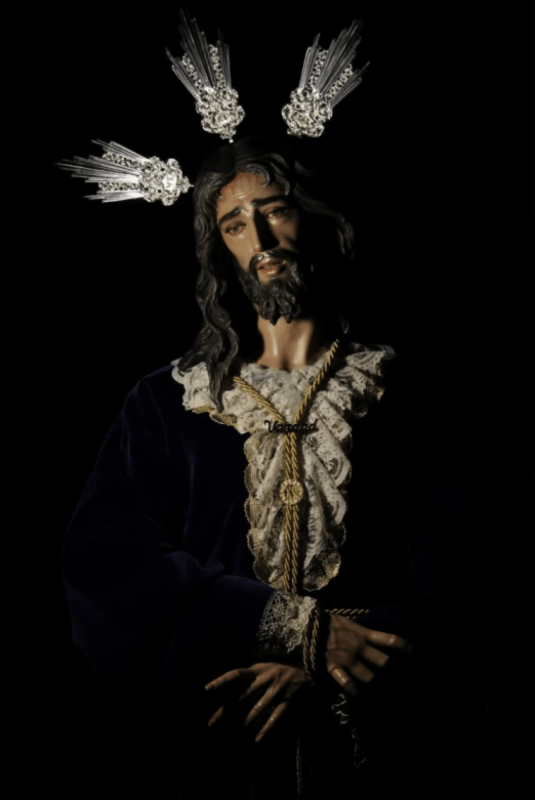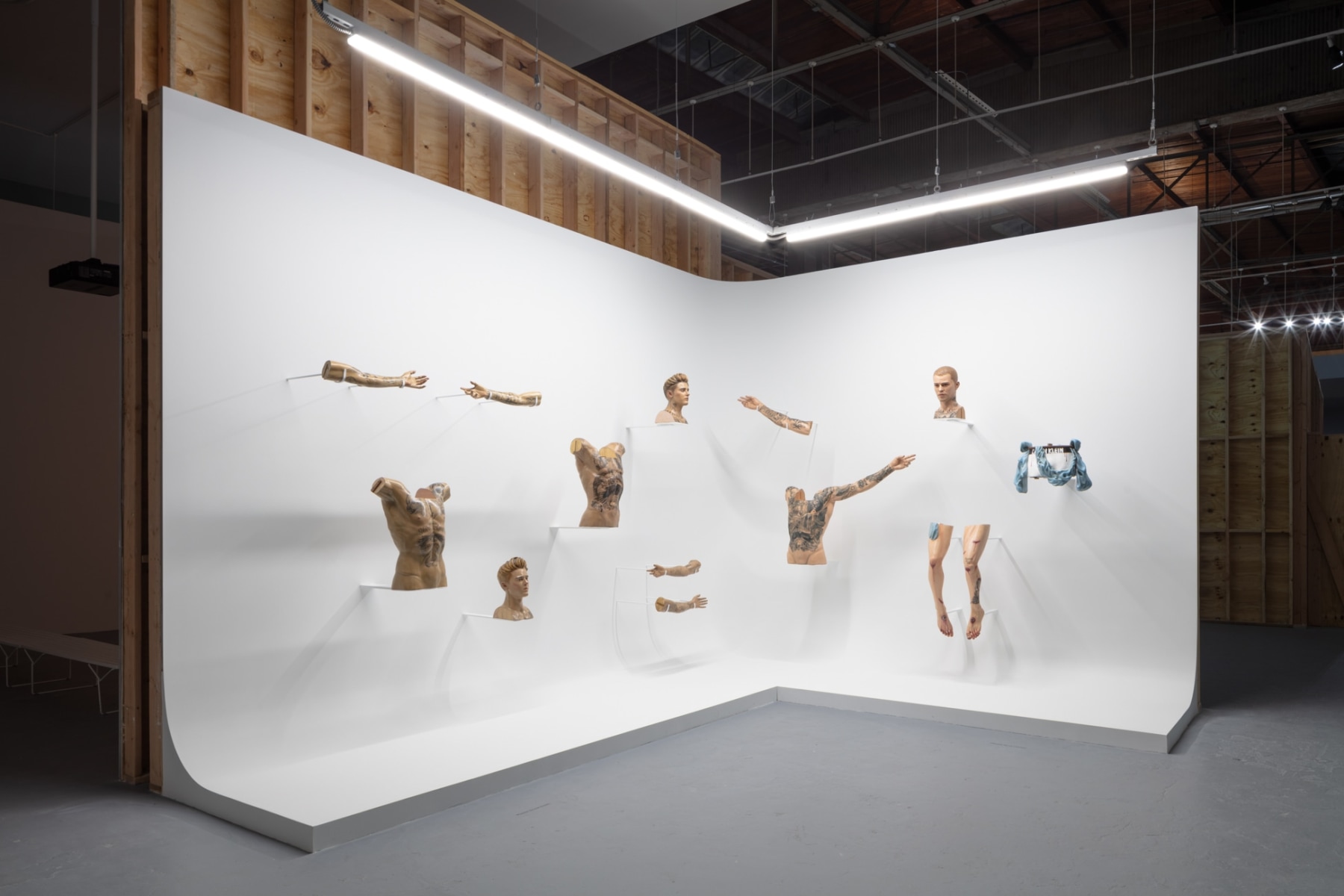Incarnator, 2018-ongoing

Paul Pfeiffer
Incarnator (Pampanga), 2024
Gmelina wood, paint
head: 16 1/4 x 8 1/8 x 8 3/4 in. (41.3 x 20.6 x 22.2 cm)
torso: 25 5/8 x 19 1/8 x 9 1/8 in. (65.1 x 48.6 x 23.2 cm)
right arm: 5 1/2 x 24 3/8 x 5 1/4 in. (14 x 61.9 x 13.3 cm)
left arm: 7 1/8 x 25 x 4 3/4 in. (18.1 x 63.5 x 12.1 cm)
legs: 40 x 14 x 9 7/8 in. (101.6 x 35.6 x 25.1 cm)

A sculpture of Jesus by Willy Layug
Paul Pfeiffer’s Incarnator series (2018–ongoing) is made in collaboration with artisans known as encarnadores (from the Latin word meaning “to make into flesh”) who produce santos (religious icons) for Catholic churches and private worship.
Pfeiffer began work on the series during a residency with Bellas Artes Projects in the Philippines in 2017. There, encarnadores are celebrated for having the power to breathe life into inanimate sculptures with their final brushes of paint, creating life-like effigies that seduce the eye into believing consciousness has been awoken in carved wood and paint. In the Philippines, this power can be most clearly seen through mass devotion to the Santo Niño de Cebú, a polychrome religious icon which was brought as a gift from Spain in 1521 by Magellan.
Pfeiffer selected pop star Justin Bieber as the subject of his own santos-like sculptures, made in collaboration with Willy Layug and other artisans in Manila. Bieber, a born-again Christian, is transformed into a contemporary embodiment of Jesus Christ, with each of his limbs carved in wood and painted with highly realistic detail. For Pfeiffer, Bieber “is emblematic of viral image circulation in the era of social media.”
On the occasion of Pfeiffer’s recent retrospective at the Museum of Contemporary Art, Los Angeles, the artist expanded the series by collaborating with artisans in Seville, Spain, where the carving tradition originated, and Tlaxcala, Mexico, where it also continues to this day. In this way, Pfeiffer retraces the colonial trading routes that brought the santos tradition to the Philippines and draws attention to unexpected contemporary cultural manifestations of shared postcolonial histories.
The Incarnator series both highlights a centuries-old craft tradition while also demonstrating how the bodies of global icons are objectified for consumption. Drawing parallels between the foundational role of the icon in religious devotion and the way images are used in the construction of celebrity, Pfeiffer explores the way notions of idol worship, sexuality and innocence may intertwine in contemporary representations of the body, both in a post-colonial context and beyond.

Installation view of Paul Pfeiffer: Prologue to the Story of the Birth of Freedom, November 12, 2023–June 16, 2024 at The Geffen Contemporary at MOCA. Courtesy of The Museum of Contemporary Art (MOCA).

Installation view of Paul Pfeiffer, Incarnator (2018–) in the Toronto Biennial of Art 2022, March 26 – June 5, 2022, at 72 Perth Ave.
Known for his highly sophisticated use of digital technologies and new media, Paul Pfeiffer (b. 1966, Honolulu, HI) has created celebrated works of video, photography, installation and sculpture since the late 1990s. Editing iconic images or found footage of sporting events, concerts, or Hollywood films, Pfeiffer explores our culture’s obsession with spectacle to uncover its hidden psychological cost. He has had one-person exhibitions at the Whitney Museum of American Art (2001); the Museum of Contemporary Art Chicago (2003); the National Gallery of Victoria, Melbourne (2005); MUSAC León, Spain (2008); the Hamburger Bahnhof, Berlin (2009); Sammlung Goetz, Munich (2011); Honolulu Museum of Art, Honolulu (2016); Museum of Contemporary Art, Chicago (2017). Pfeiffer is currently the subject of a travelling retrospective: Prologue to the Story of the Birth of Freedom. The exhibition opened at the Museum of Contemporary Art, Los Angeles, in 2023, is currently on display at the Guggenheim Museum, Bilbao, and will open at the Museum of Contemporary Art, Chicago, in 2025. Pfeiffer was also the subject of a retrospective at Sammlung Goetz in Munich, Germany. His work is in the permanent collections of the Museum of Modern Art and the Whitney Museum of American Art, New York; Inhotim Museu de Arte Contemporanea, Inhotim, Brazil; the Pinault Collection, Venice; Hamburger Bahnhof, Berlin; K21, Dusseldorf; Julia Stoscheck Foundation, Dusseldorf and Berlin; and Pinothek der Moderne and Sammlung Goetz, Munich.